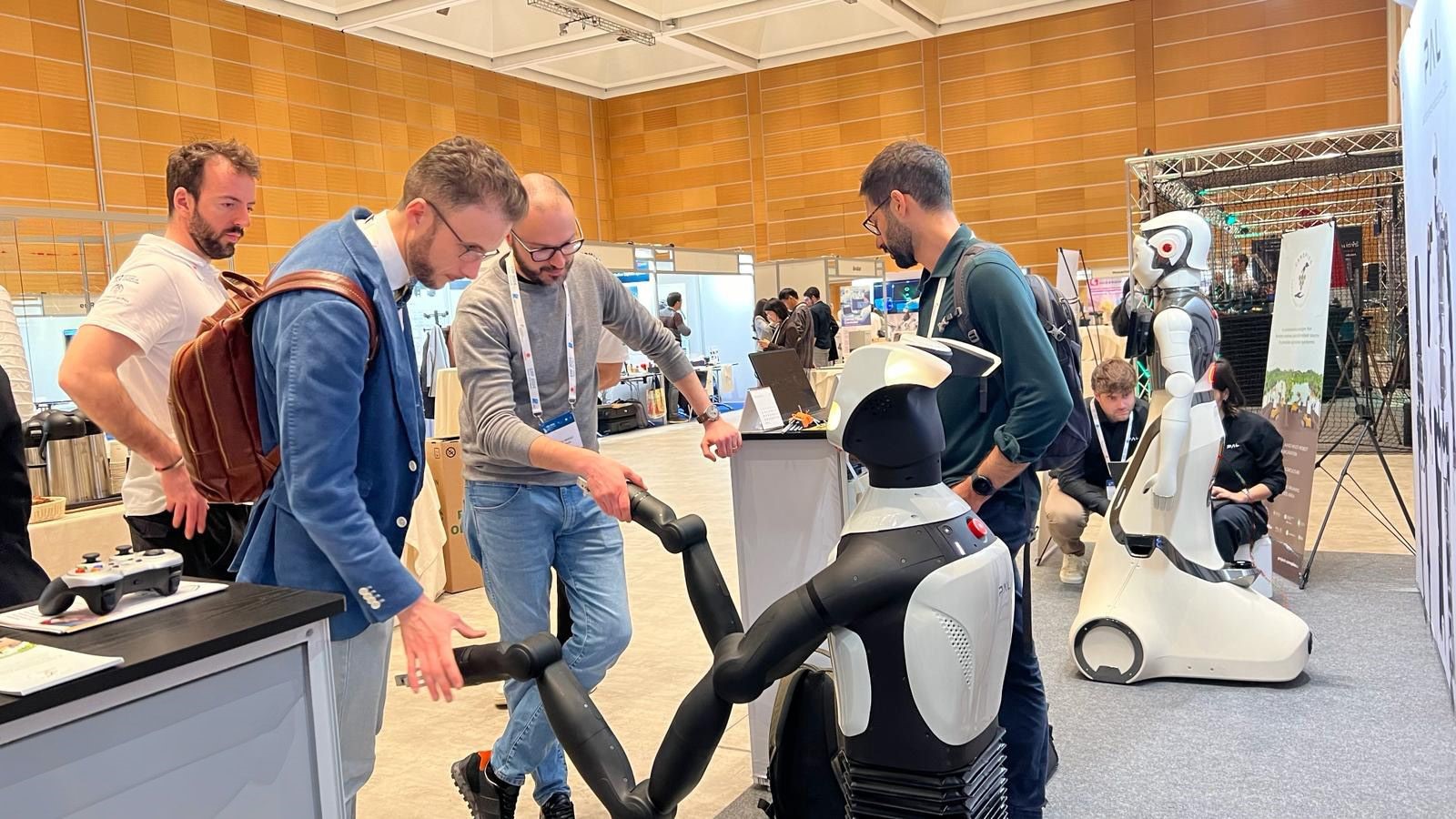The “European Robotics Forum” (ERF) was held in Rimini from 13 to 15 March, under the scientific responsibility of the University of Bologna. This unique event gathers leading experts, both academic and industrial, at international level in robotics, with the presence of the major European companies with interests in this field.

Enrico was part of the euROBIN project booth, where demonstration of robots were showcased, as well as latest innovations and the people behind them.
He gave a talk in the “Advancements in High Performance Humanoid & Legged Robot Functionalities” workshop, during which he made a presentation called “Modeling and Numerical Analysis of Kangaroo Lower Body” giving a personalopinion on new trends in humanoid robotics design: Many new companies and startups are developing bipedal robots with the specific goal of transitioning this technology from research lab prototypes to useful products. This humanoid robotics gold rush builds upon several years of research and development and follows the outcomes of the DARPA Robotics Challenge, which will turn 10 next year.Humanoid robotics have undergone significant changes over the years. In particular, innovative mechatronic designs and control approaches, including those based on learning, have reduced the time-to-walk for these platforms as well as their costs. These two aspects were particularly concerning for both the research and industrial communities. However, now these platforms demonstrate remarkable robust locomotion behaviors and their costs is decreasing also benefiting from advancements in other legged systems, such as quadrupeds.Indeed, quadrupeds are now mainstream in both research and industry, offering competitive prices. These platforms have 12 motors for walking, which is the same number of motors that bipedal systems have in their legs.Therefore, we can expect that prices will also decrease for these platforms. Legged systems will become essential in environments that present 3D obstacles to overcome, such as stairs or uneven terrain, and humanoid robots offer the possibility to manipulate objects in difficult-to-reach or confined spaces.In fact, the advantage of humanoid robots lies in their form factor: with a smaller footprint, they can reach objects placed at different heights and operate in environments designed for humans. Additionally, they can adapt and function as quadrupeds if needed. During the presentation, Enrico also discussed a study on the kinematic structure of the lower body of a new bipedal system called Kangaroo, developed by PAL Robotics. The system is characterized by multiple serial-parallel hybrid kinematic chains.This platform is particularly interesting for its dynamic capabilities, offering the possibility of achieving very agile motions due to its unique mechatronic design.
In the future, Enrico will continue his research on this platform, particularly focusing on locomotion-manipulation tasks that require whole-body movement and multiple contact interactions with the environment.




